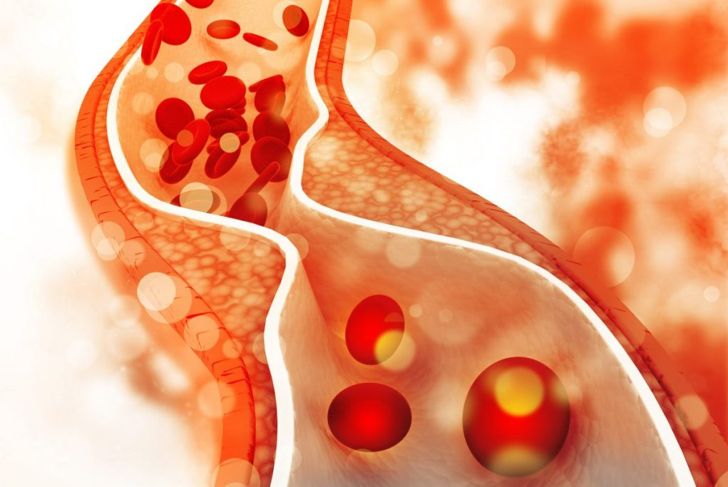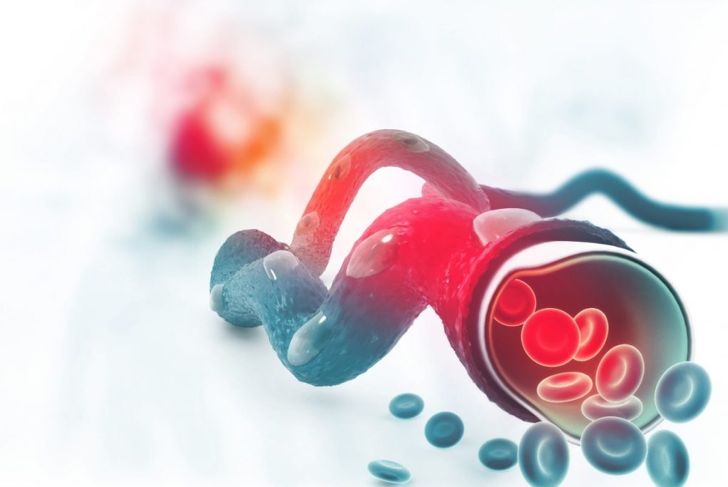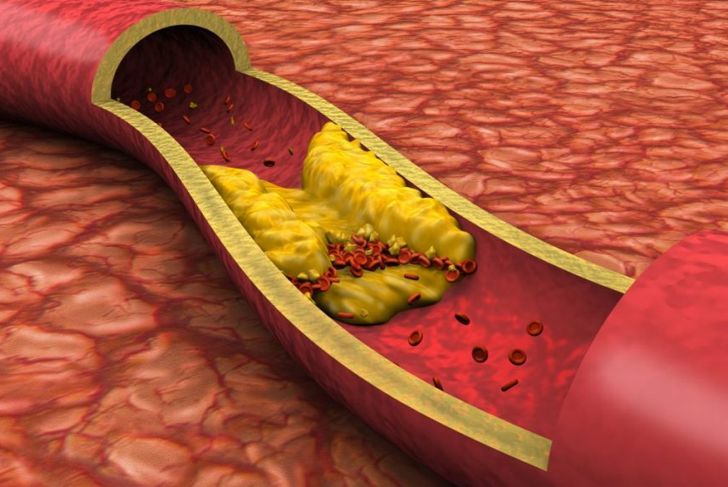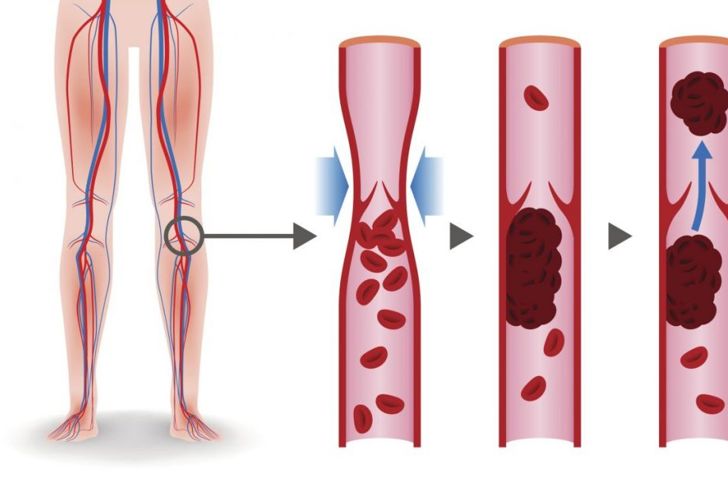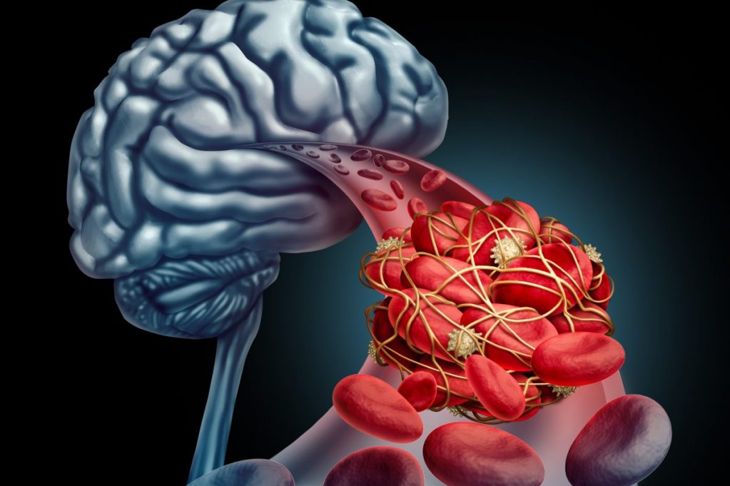An embolus is an unanchored mass that travels through the blood vessels. This mass can consist of a variety of different materials, though blood clots are the most common. Eventually, the embolus reaches a blood vessel too narrow for it to travel through, and lodges there. This prevents blood from travelling through and prevents the area from receiving oxygenated blood and reoxygenation of the blood. This blockage is an embolism.
Emboli
There are several types of emboli, each with a unique cause and made up of different materials:
- A thromboembolism is a portion of a blood clot that detaches from its original site and travels through the blood vessels.
- A fat embolism occurs when fat tissue leaks into the bloodstream. This most often occurs following bone fractures.
- An air embolism is usually the result of an issue with the lungs where inhaled air escapes into the blood vessels.
- A gas embolism is a frequent concern for deep-sea divers because small bubbles form in the blood as they ascend to the surface. This is the cause of decompression sickness.
- Pus or foreign objects such as bullet fragments can also form an embolus. However, this is incredibly rare.
Arterial Embolism
The arteries are major blood vessels that carry blood from the heart to the rest of the body. With the exception of the pulmonary and the umbilical arteries, the arteries carry oxygenated blood. Because of this, an arterial embolism has a variety of possible side effects. Thromboembolisms are the most common form of arterial embolism, though any embolus could potentially create a blockage. Diagnosis for an arterial embolism typically involves any test that can confirm the presence of the embolism, such as an ultrasound, MRI screening, or electrocardiogram.
Symptoms of an Arterial Embolism
Depending on the size of the embolus, symptoms may develop slowly or rapidly. Additionally, symptoms vary depending on which artery the embolus is blocking. Common symptoms include pain around the affected area and temporarily decreased organ function. Eventually, the embolism may result in infarction. This is the death of tissue due to a lack of oxygenated blood. Infarctions can permanently affect the functionality of the affected area, as well as causing further issues. For example, myocardial infarction in the heart can cause chest pain, lightheadedness, and vomiting.
Causes of an Arterial Embolism
There are a number of risk factors for arterial embolisms. Any injury to the arterial wall creates increases the likelihood of an arterial embolism forming. Conditions or procedures that disturb the blood flow are also dangerous. One of the most common causes of arterial embolisms is atherosclerosis. This is a disease where plaque builds up along the interior of an artery, severely narrowing it. Because of this, atherosclerosis and arterial embolisms share risk factors. Cigarette smoking, hypertension, obesity, stress, diabetes, and a sedentary lifestyle all increase a person’s chance of developing both atherosclerosis and an arterial embolism.
Venous Embolism
The veins are blood vessels that carry deoxygenated blood to the heart. They are typically less muscular than arteries but closer to the surface of the skin. The pulmonary and umbilical arteries are similar to veins because they also carry deoxygenated blood to the heart. Veins eventually connect to these arteries. Any venous embolism in a systemic vein eventually enters the pulmonary artery. This results in a pulmonary embolism. Most venous embolisms occur in the femoral veins in the legs.
Symptoms of a Venous Embolism
One frequent symptom of a venous embolism is redness around the origin area. Because the pulmonary artery is the main artery of the lungs, the resulting symptoms typically involve oxygen-deprivation. Most of the symptoms are sudden and develop quickly. Shortness of breath and chest pain while breathing are the most common symptoms. A person may also experience rapid breathing and a rapid heart rate. Eventually, the embolism may lead to the person passing out or, in extreme cases, sudden death. One key warning sign of a serious pulmonary embolism is a blue coloration around the lips and fingers.
Causes of a Venous Embolism
Around 90 percent of pulmonary embolisms are the result of a venous thromboembolism originating from a vein deep in the legs, such as deep vein thrombosis. As with arterial embolisms, there a number of risk factors that increase the chance a person develops a venous embolism. Any event that causes an alteration of blood flow, such as immobilization following surgery, pregnancy, or injury is a major risk factor. Some medications can directly affect the blood and promote coagulation. These medications can be contraception that contains estrogen or cancer treatments that improve coagulation.
Paradoxical Embolism
Sometimes called cross embolisms, paradoxical embolisms refer to an embolus that the blood carries from the venous side to the arterial side, or from the arterial side to the venous side. Some physicians find that paradoxical embolisms are difficult to diagnose. Many patients with a paradoxical embolism present symptoms that reflect a neurological issue or suggest an arterial embolism. Paradoxical embolisms share risk factors with venous embolisms and also usually begin in the legs. However, instead of traveling to the lungs, the embolus travels to areas such as the brain or kidneys.
Symptoms of a Paradoxical Embolism
Symptoms of paradoxical embolisms ultimately depend on the end-location of the embolus. In some cases, paradoxical embolisms mimic venous and arterial embolisms. If the embolism affects the brain, it can result in neurological deficits or blindness. Embolisms that block blood flow to the extremities can cause gangrene that requires amputation. Particularly large or long-lasting paradoxical embolisms can cause irreparable organ damage. For example, paradoxical embolisms frequently cause renal infarction in the kidneys. This can lead to renal insufficiency or complete renal failure.
Treatment
Physicians treat embolisms differently depending on the severity and the material of the embolus. Anticoagulants can break up minor blood clots and allow the blood to flow freely. Less powerful anti-clotting agents may also prove effective. Foreign body embolisms may require surgical intervention to remove the embolus. In some cases, a compression band or stocking may be able to increase blood pressure in the affected limb. In some cases, a surgeon may insert a vein filter to prevent emboli from entering the lungs. If this proves to be unnecessary in the long-term, the surgeon may remove the filter at a later date.

 Home
Home Health
Health Diet & Nutrition
Diet & Nutrition Living Well
Living Well More
More